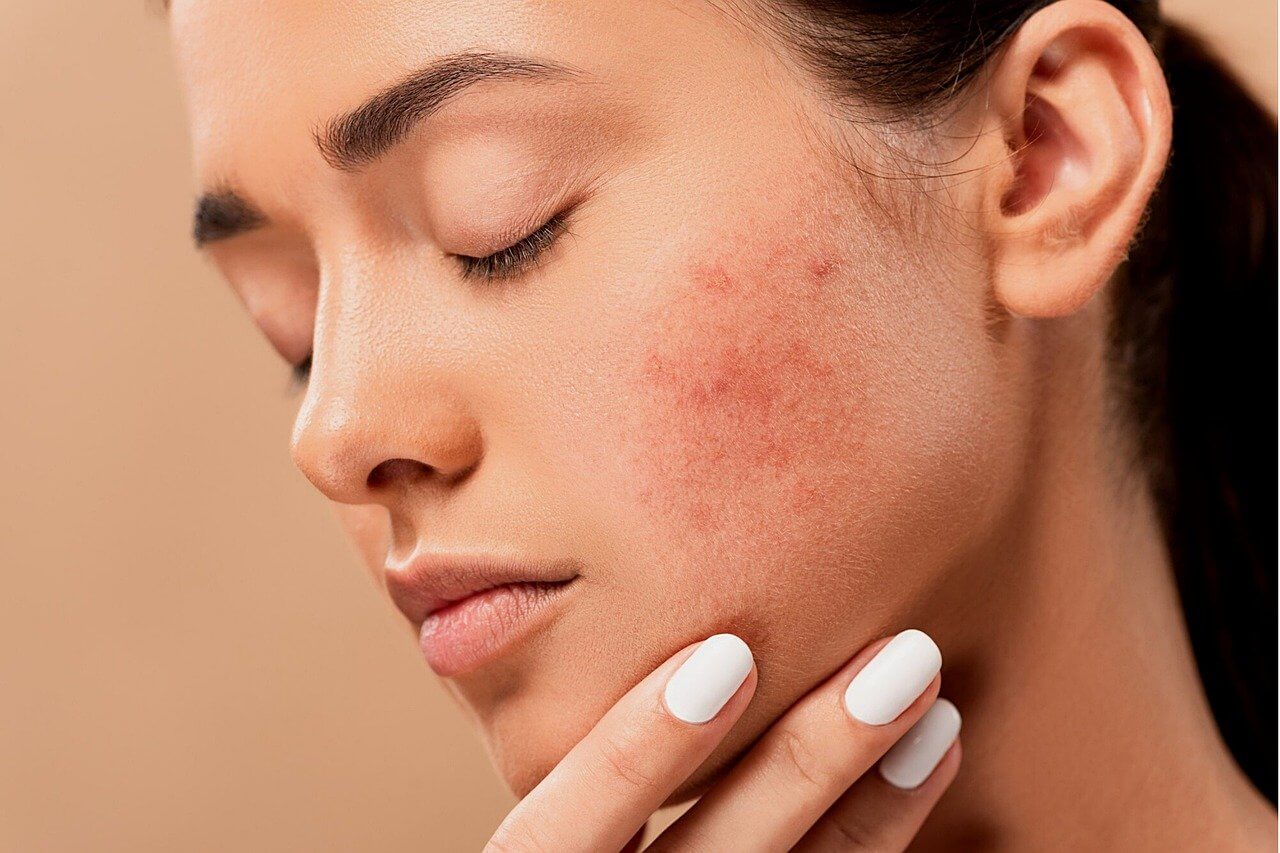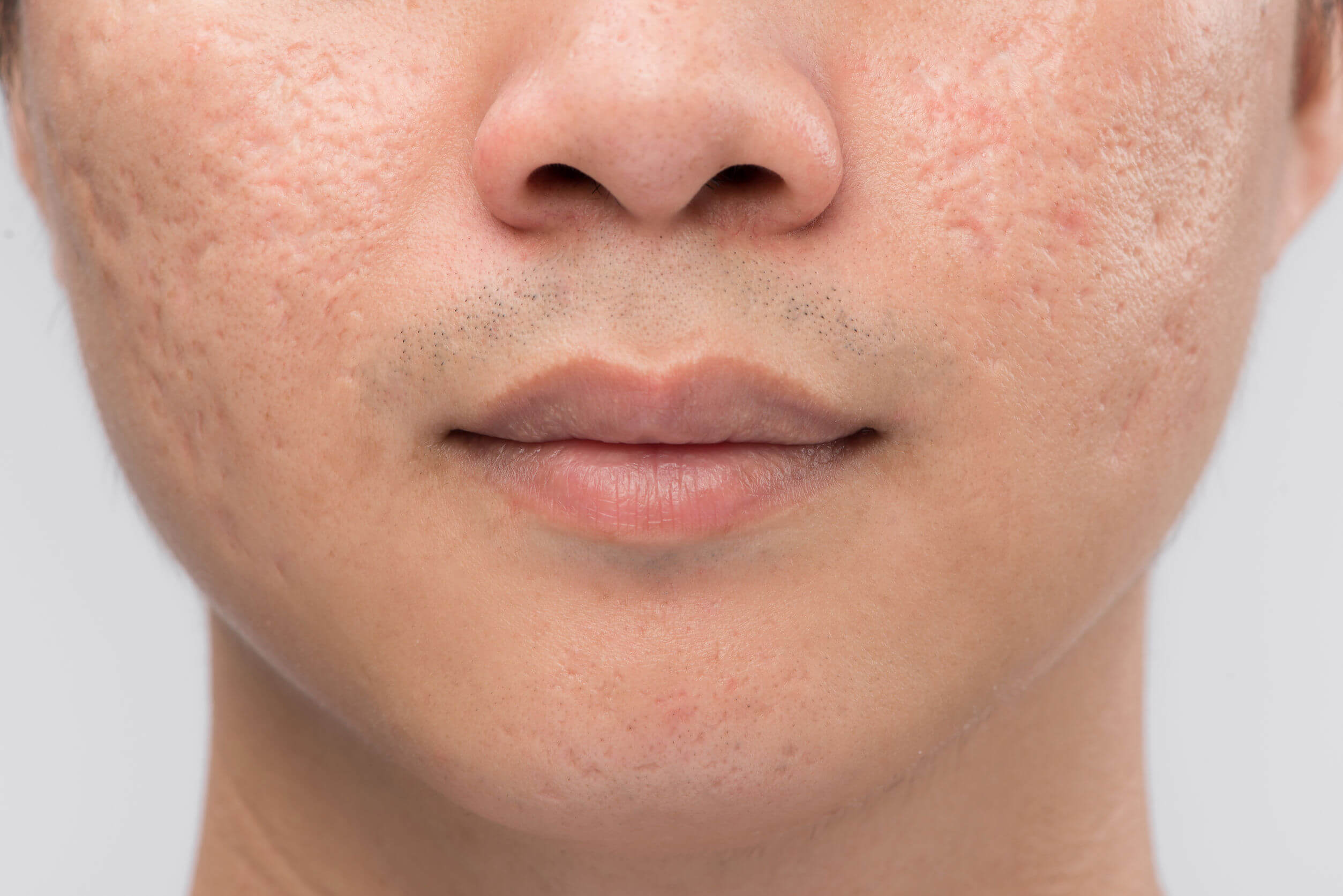Acne Conglobata: Everything You Need to Know

Although we’re used to seeing more people with mild or moderate acne than those with more severe forms, these are also present in the population. They’re less common, but can be extremely uncomfortable. One of the rarest is called acne conglobata.
In any of its manifestations (mild, moderate, or severe), acne is a complex skin condition that can cause great discomfort to those who have it. Also, its aesthetic impact can significantly decrease the quality of life of the person.
Treatment is essential. Not only to improve the health of the skin but also to contribute to the overall well-being of the person. Now, in forms as severe as acne conglobata… How is it approached? To answer this question, we must first go over everything you need to know about this condition.
The causes of acne conglobata

In any of its manifestations, the causes of acne are always difficult to pin down. For this reason, it’s not common to indicate one, two, or three, but several causes or, rather, factors. Regarding acne conglobata, scientific evidence indicates the following:
“Multiple factors are involved in the pathogenesis of acne. Among them is the hyperproliferation of Propionibacterium acnes, which stimulates the production of pro-inflammatory cytokines… The action of these mediators in the pathogenesis of inflammatory acne lesions therefore seems evident”.
In general, the hypotheses revolve around the existence of hypersensitivity to P. acnes and androgens, in conjunction with other health problems. The latter include alterations in the sebaceous glands (and excessive production of sebum), alteration in keratinization, and excessive exposure to the sun, among others.
Experts believe that acne conglobata can appear as a result of the worsening of pustular acne vulgaris or as a worsening of a type of acne that had gone into remission and was under control for a long time.
In women, acne conglobata has frequently been associated with polycystic ovary syndrome. However, it hasn’t been possible to determine whether the syndrome is a determining factor. Therefore, the relationship is still under investigation.
Symptoms
Unlike what happens with other types of acne, in acne conglobata, the lesions (comedones, cystic nodules, fistulas, and abscesses) are deep and painful, especially due to the level of inflammation they involve). They most often affect the upper body. In particular, the face, neck, shoulders, chest, and back.
- Unlike other types of acne, which can cause isolated lesions, acne conglobata comedones appear in groups of three. For this reason, it’s not surprising that abscesses then connect with each other.
- A foul-smelling, purulent substance comes out of the cysts and is discharged onto the surface of the skin.
- Nodules may be more common on areas such as the face, shoulders, chest, and upper arms, but they can also occur on the thighs and buttocks.
At the same time, after the lesions heal, they can leave the skin deformed. In other words, the scars are hypertrophic and can include keloids.
Although it can affect people of both sexes, acne conglobata seems to be more common in men between the ages of 20 and 30, although it can also occur before the age of 20.
The differences between acne conglobata and acne fulminans

Acne conglobata bears some similarities to acne fulminans. However, these are two different conditions. Mainly for the following reasons:
- Acne conglobata doesn’t develop as quickly as acne fulminans. In addition, in the latter, the person may have a fever and other discomforts on top of the pain in the lesions.
- In acne fulminans, the lesions remain open. They don’t form scabs, unlike in the case of acne conglobata.
Treatment
Experts say that acne conglobata is “notoriously difficult to treat, and the residual scars are quite severe. Isotretinoin is the most effective treatment, but recurrences can occur.” For this reason, a dermatologist must adjust the treatment according to the case.
Another article on the therapeutic approach to this condition indicates that “at present, the most prescribed treatment is based on the administration of retinoids,” and the importance of informing the patient about this type of medication is highlighted.
Beyond the level of severity with which it affects the skin, it’s essential to treat acne conglobata with professional help (both from a dermatologist and a psychologist) and to maintain a rigorous follow-up to prevent the person’s well-being from continuing to decline.
In this regard, it must be taken into account that many patients develop anxiety or depression as a result of the aesthetic impact of acne on their skin.
If you think your acne is severe, be sure to get a checkup. The sooner a professional evaluates you and makes a diagnosis, the sooner you can receive appropriate treatment and feel better. Therefore, don’t wait too long to book an appointment with a professional.
Although we’re used to seeing more people with mild or moderate acne than those with more severe forms, these are also present in the population. They’re less common, but can be extremely uncomfortable. One of the rarest is called acne conglobata.
In any of its manifestations (mild, moderate, or severe), acne is a complex skin condition that can cause great discomfort to those who have it. Also, its aesthetic impact can significantly decrease the quality of life of the person.
Treatment is essential. Not only to improve the health of the skin but also to contribute to the overall well-being of the person. Now, in forms as severe as acne conglobata… How is it approached? To answer this question, we must first go over everything you need to know about this condition.
The causes of acne conglobata

In any of its manifestations, the causes of acne are always difficult to pin down. For this reason, it’s not common to indicate one, two, or three, but several causes or, rather, factors. Regarding acne conglobata, scientific evidence indicates the following:
“Multiple factors are involved in the pathogenesis of acne. Among them is the hyperproliferation of Propionibacterium acnes, which stimulates the production of pro-inflammatory cytokines… The action of these mediators in the pathogenesis of inflammatory acne lesions therefore seems evident”.
In general, the hypotheses revolve around the existence of hypersensitivity to P. acnes and androgens, in conjunction with other health problems. The latter include alterations in the sebaceous glands (and excessive production of sebum), alteration in keratinization, and excessive exposure to the sun, among others.
Experts believe that acne conglobata can appear as a result of the worsening of pustular acne vulgaris or as a worsening of a type of acne that had gone into remission and was under control for a long time.
In women, acne conglobata has frequently been associated with polycystic ovary syndrome. However, it hasn’t been possible to determine whether the syndrome is a determining factor. Therefore, the relationship is still under investigation.
Symptoms
Unlike what happens with other types of acne, in acne conglobata, the lesions (comedones, cystic nodules, fistulas, and abscesses) are deep and painful, especially due to the level of inflammation they involve). They most often affect the upper body. In particular, the face, neck, shoulders, chest, and back.
- Unlike other types of acne, which can cause isolated lesions, acne conglobata comedones appear in groups of three. For this reason, it’s not surprising that abscesses then connect with each other.
- A foul-smelling, purulent substance comes out of the cysts and is discharged onto the surface of the skin.
- Nodules may be more common on areas such as the face, shoulders, chest, and upper arms, but they can also occur on the thighs and buttocks.
At the same time, after the lesions heal, they can leave the skin deformed. In other words, the scars are hypertrophic and can include keloids.
Although it can affect people of both sexes, acne conglobata seems to be more common in men between the ages of 20 and 30, although it can also occur before the age of 20.
The differences between acne conglobata and acne fulminans

Acne conglobata bears some similarities to acne fulminans. However, these are two different conditions. Mainly for the following reasons:
- Acne conglobata doesn’t develop as quickly as acne fulminans. In addition, in the latter, the person may have a fever and other discomforts on top of the pain in the lesions.
- In acne fulminans, the lesions remain open. They don’t form scabs, unlike in the case of acne conglobata.
Treatment
Experts say that acne conglobata is “notoriously difficult to treat, and the residual scars are quite severe. Isotretinoin is the most effective treatment, but recurrences can occur.” For this reason, a dermatologist must adjust the treatment according to the case.
Another article on the therapeutic approach to this condition indicates that “at present, the most prescribed treatment is based on the administration of retinoids,” and the importance of informing the patient about this type of medication is highlighted.
Beyond the level of severity with which it affects the skin, it’s essential to treat acne conglobata with professional help (both from a dermatologist and a psychologist) and to maintain a rigorous follow-up to prevent the person’s well-being from continuing to decline.
In this regard, it must be taken into account that many patients develop anxiety or depression as a result of the aesthetic impact of acne on their skin.
If you think your acne is severe, be sure to get a checkup. The sooner a professional evaluates you and makes a diagnosis, the sooner you can receive appropriate treatment and feel better. Therefore, don’t wait too long to book an appointment with a professional.
- Gutiérrez Cecilia, Ávila Raquel, Rojas Milagros, Olivar Luis Carlos, Mejías José Carlos, Chávez-Castillo Mervin et al . Acné conglobata: A propósito de un caso. AVFT [Internet]. 2014 Jun [citado 2021 Jun 05] ; 33( 2 ): 51-59. Disponible en: http://ve.scielo.org/scielo.php?script=sci_arttext&pid=S0798-02642014000200001&lng=es.
- Hafsi W, Badri T. Acne Conglobata. [Updated 2020 Jul 17]. In: StatPearls [Internet]. Treasure Island (FL): StatPearls Publishing; 2021 Jan-. Available from: https://www.ncbi.nlm.nih.gov/books/NBK459219/
- Norris-Squirrell F, Pereira M. Abordaje terapéutico de acné conglobata. Dermatol Rev Mex. 2017 julio;61(4):308-311.
- Vega, J., L. Sánchez-Velicia, and T. Pozo. 2010. “Eficacia de Etanercept En El Tratamiento Del Acné Conglobata.” Actas Dermo-Sifiliograficas 101 (6): 553–54. https://doi.org/10.1016/j.ad.2009.12.026.
Este texto se ofrece únicamente con propósitos informativos y no reemplaza la consulta con un profesional. Ante dudas, consulta a tu especialista.







